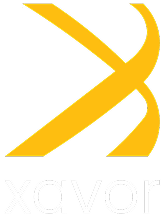
The Technology and Innovation Committee (T&I) held an event last Friday (November 18th, 2016) titled, “Digital Platforms and Design of Innovative Business Ecosystems”.
Opening Remarks
During the opening remarks, Dr. Hugh Rashid, Co-Chair of the T&I committee, highlighted the importance of bringing more depth (both in terms of technology as well as human experiences in the digitally connected world) to the topic of innovation by combining practitioner-scholar speaker presentations with engaging panel discussions and audience participation. Hugh introduced the keynote presenter Professor Youngjin Yoo of Weatherhead School of Management of Case Western University, USA. Youngjin is one of the leading scholars of design solutions and innovation and has won numerous best paper awards at top academic conferences. He was ranked #1 in the world in 2010 for his research productivity published in top MIS journals. Youngjin has also consulted with leading companies including Samsung Electronics, Intel, Ford Motor Company, IDEO, Gehry and Partners, University Hospitals in Cleveland, NASA, and many others.
Keynote Presentation
Design & Innovation Professor Youngjin Yoo from Case Western University provided insights into how traditional industries need to think about digital transformation to drive innovation rather than waiting to be disrupted. The key takeaways from his presentation were:
• There is something fundamentally different going on as we look at some of the hugely successful digital platforms, such as the largest accommodation company Airbnb or the largest Taxi company Uber.
• Under the industrial economic paradigm (Figure 1), firms transfer resources into marketable goods and services (combining form function and matter) with value by exchanging between producer and buyer at the point of the sale transaction.
• Digital platforms technologies are changing this framework upside down for several reasons: a) digital products are non-material (they are ‘bitstreams’), b) they allow separation of form and function (different software on same hardware can perform a different function), c) they allow separation of content and media
• Decoupling of the content, distribution, software and hardware creates the potential to re-imagine product and services that can even transcend traditional tightly-coupled industries. Often digital players are in a better position to re-imagine new possibilities. For example, Google Maps team realized that with their navigation technology, they have the ability to digitally manage movement precisely which led to the leap of ‘why not create a car that can follow the digital blue dot on the map.
• Big Data, when combined with algorithms (Machine Learning), gives insights which make new business models possible. Not only can greater value be created (such as quicker access to a Taxi), but also binding of physical assets can be delayed closer to the point of consumption (a private passenger car turning into a Taxi only when reservation is made). This being in sharp contrast to traditional industry players who are stuck with permanent and early binding of form, function and matter (maintaining a fleet of Taxis).
• Under the digital economy, value is co-created at the point of use rather than after the purchase as under the industrial value chain. The continuous stream of data about use of the product or service opens an opportunity to continue to deliver greater personalized value experience. Since the producer is not present when the user is co-creating the value, a critical component of the digital platform has to focus on building dynamic capabilities to understanding and enhancing the user experience. For example, when a user reads a book on Amazon’s kindle device, Amazon is not there to observe how you’re reading the book. But through big data and algorithms, they know details such as which pages of the book you have read, what words you looked-up, which sentences you highlighted etc. all of which they can use to refine your user experience and the business model. Traditional industries, therefore, need to focus on the users and not the customers. The classic example is Nokia : the company was designing products for its customers/buyers while Apple created its iPhone to give users a more superior value experience and then told AT&T to enhance its digital platforms to deliver that user experience. Through both platform and environment, Apple continued to understand and enhance the user experience through apps, upgrades and complementary products and services (See Figure 4).
Panel Discussion
A panel discussion was facilitated by Dr. Hugh where he introduced Nicolas Leclercq (Nico) from SAP (a German software giant) to join Professor Youngjin for an interactive discussion with the audience on designing user experiences. After spending time in Silicon Valley startups, Nico joined SAP 14 years ago and has been spreading the design thinking culture across various product development teams. Nico shared how an earlier CEO of SAP donated $30 million dollars to Stanford University to establish the Design School (d.school) to spread Design Thinking globally.
• When designing products and services, the focus needs to be on users, user experience, and user base and not just buyers, the product, and market share.
• Designing amazing user experience is not simple. In fact with the ability to recombine content, distribution, hardware and software, it is much easier to design products with bad user experience that no one wants or over-engineer products that are complex and difficult to use.
• Design Thinking provides various tools that allow teams to become intensely human-centric when designing user experiences. It is an iterative process of understanding unmet needs and new desirable possibilities and then experiment and prototype technically feasible and innovative business models to deliver amazing user experiences.
• It is often easy for engineers and marketing to understand the merits of design thinking and often the hardest people to win support from the finance and human-resource executives. Without support, it is difficult to build organizational-wide capability in design and hence CEO involvement becomes essential to transform the culture and embrace design thinking, design mindset and design attitude.
Q&A SESSION
Q. What should traditional companies do to innovate themselves to take advantage of the possibilities with the digital platform technologies?
A. Focus on Finance and HR as one of the key groups that needs to “get it” and support the digital transformation.
You have to look broadly who your competition is. Often disruption can come from someone you did not consider to be your competitor. For example, a large sink manufacturer wants to be the center of the kitchen while Samsung wants the refrigerator to be the center of the kitchen. Traditionally, they were considered to be in different industries and not competitors, but now they are both competing to be the center of the smart kitchen.
Q. What are some of the downsides to embracing design thinking?
A. Gaining deep insights require time and money – – many senior executives think of it as unnecessary even though downstream rewards can be huge. For example, after Samsung gained insights that people only turn on their living room TV two hours a day, it realized that the TV was basically a piece of furniture. A senior executive then sent off all the key people in the TV division to go to Italy and visit various designers of furniture and then come and design the next generation Samsung TV which eventually was a great hit in the market.
Another danger is to execute design thinking activities in a mindless robotic manner and losing sight of designer mindset and designer attitude necessary for gaining deeper insights and generating ideas and then converting them into experiences that people love.
Overall event summary:
Digital technologies and the opportunities they create for digital platforms and ecosystems have the potential to offer new levels of user experiences not possible during the traditional industrial era. What Uber has done for taxi service and what Airbnb has done for accommodation rental service are just the beginning and more disruptions are on the way. In fact, every traditional industry and traditional companies in those industries are subject to being disrupted. However, these traditional companies can take advantage of ‘digitization of everything’ by creating innovative products, service and business models by developing organizational capability in designing of digital platforms and value co-creating ecosystem. Youngjin provided a framework to think about decoupling and reconfiguring content, distribution, hardware and software to break down traditional industry barriers and co-creating user experiences that delay binding of physical resources till the point of use and continue generating value on-demand by temporary assemblage of material and immaterial resources.
Such transformation is not easy and will require developing design culture (designing thinking, design attitude and design mindset) not only with engineers and marketing but also with finance and human-resource departments who are often last to embrace innovation especially if it can lead to short term disruption in the current operations. Nico mentioned that SAP now has a companywide culture of leveraging design thinking at the product and project level and increasingly focuses on its business model innovation Organizational level transformation towards design-driven and user-focused experience requires a long-term commitment of leadership team and is much harder than at the project or product level. However, many traditional companies, such as, in auto, electronics and appliance businesses, are already marching ahead on their user-centered design journey. Besides focusing on the user experience, it will require building an ecosystem of user base and cross-industry partners around a digital platform that is dynamic, self-learning and acts as an engine for value co-creation and efficient utilization (delayed binding) of physical resources. In other words, traditional companies need to design innovative business models that let the digital resources amplify their current physical resources and overtime minimize them as much as possible for greater flexibility and profits.
Author: Dr. Humayun (Hugh) Rashid
Dr. Hugh is a practitioner-scholar with over 25 years of experience working and consulting with global organizations in the US, Europe and Asia in areas of IT-enabled business innovation.
Currently, he is heading the Xavor China operations (based out of Shanghai) to facilitate product innovation ecosystem development between multi-nationals and startups in US and China.
Dr. Hugh maintains a strong network of university collaboration in the US and China through his MBA teaching of courses in Design Thinking & Design-Driven Innovation, Cross-Culture Management and International Marketing at various universities including University of Southern California (USC), Wuhan University, Chongqing University, Beijing Normal University, Peking University, Renmin University and Fudan University.
In addition, Dr. Hugh is also the founder of Xavor Corporation, which provides innovative business solutions and digital platforms to high-tech organizations. He has a BBA from University of Texas Austin (USA), Executive MBA from University of California at Irvine (California) and Doctorate in Management from Case Western University in Cleveland, Ohio (USA).
